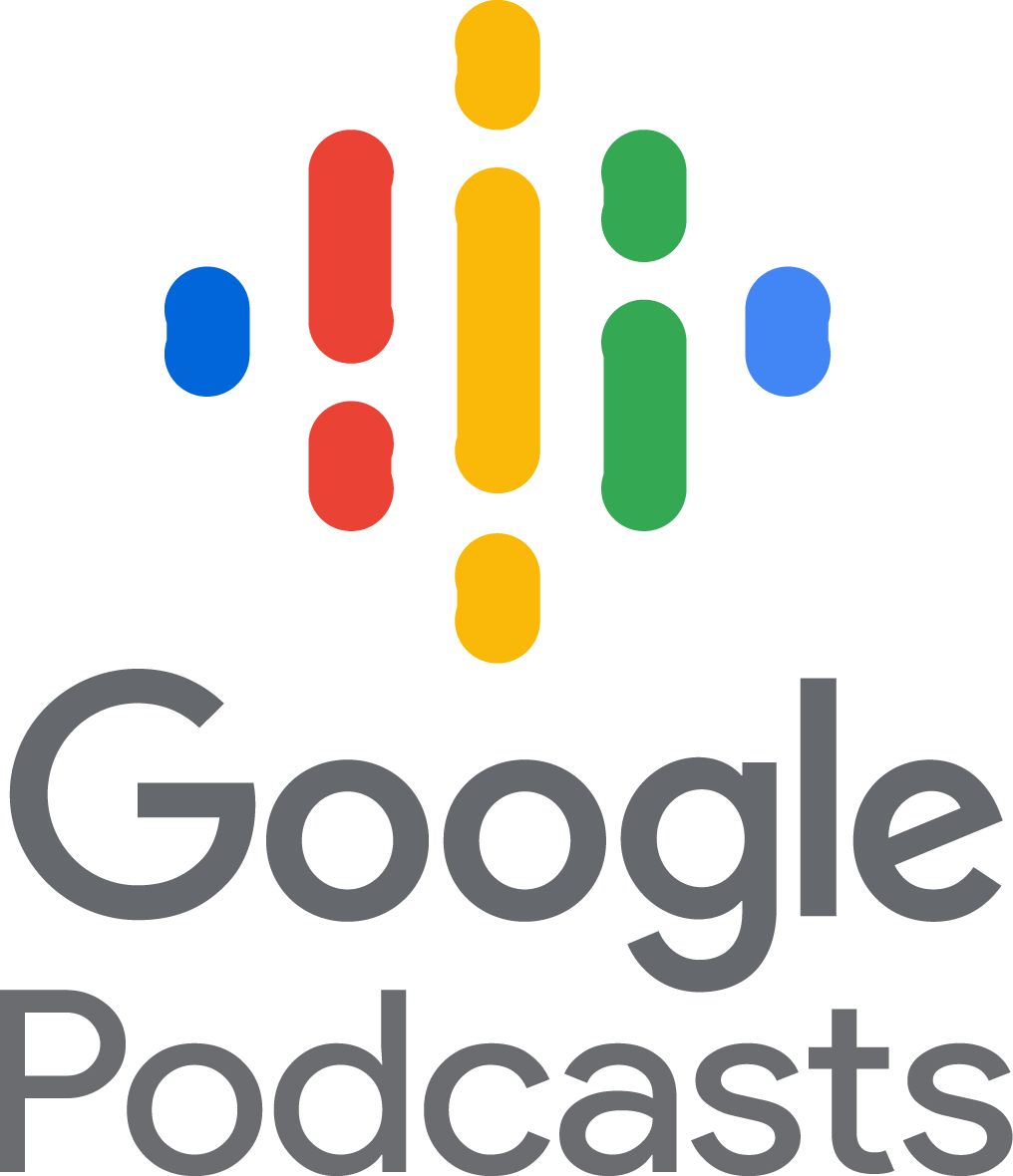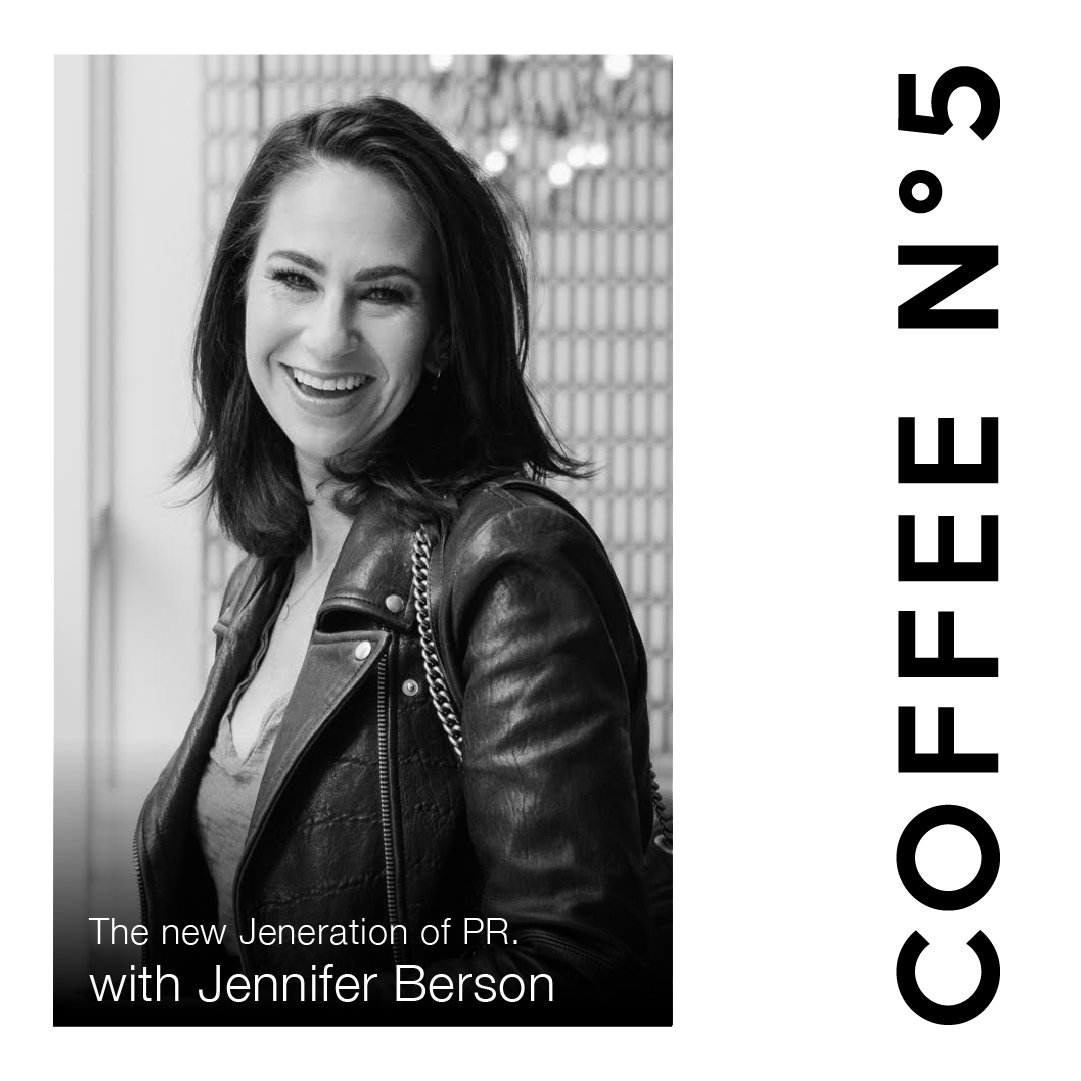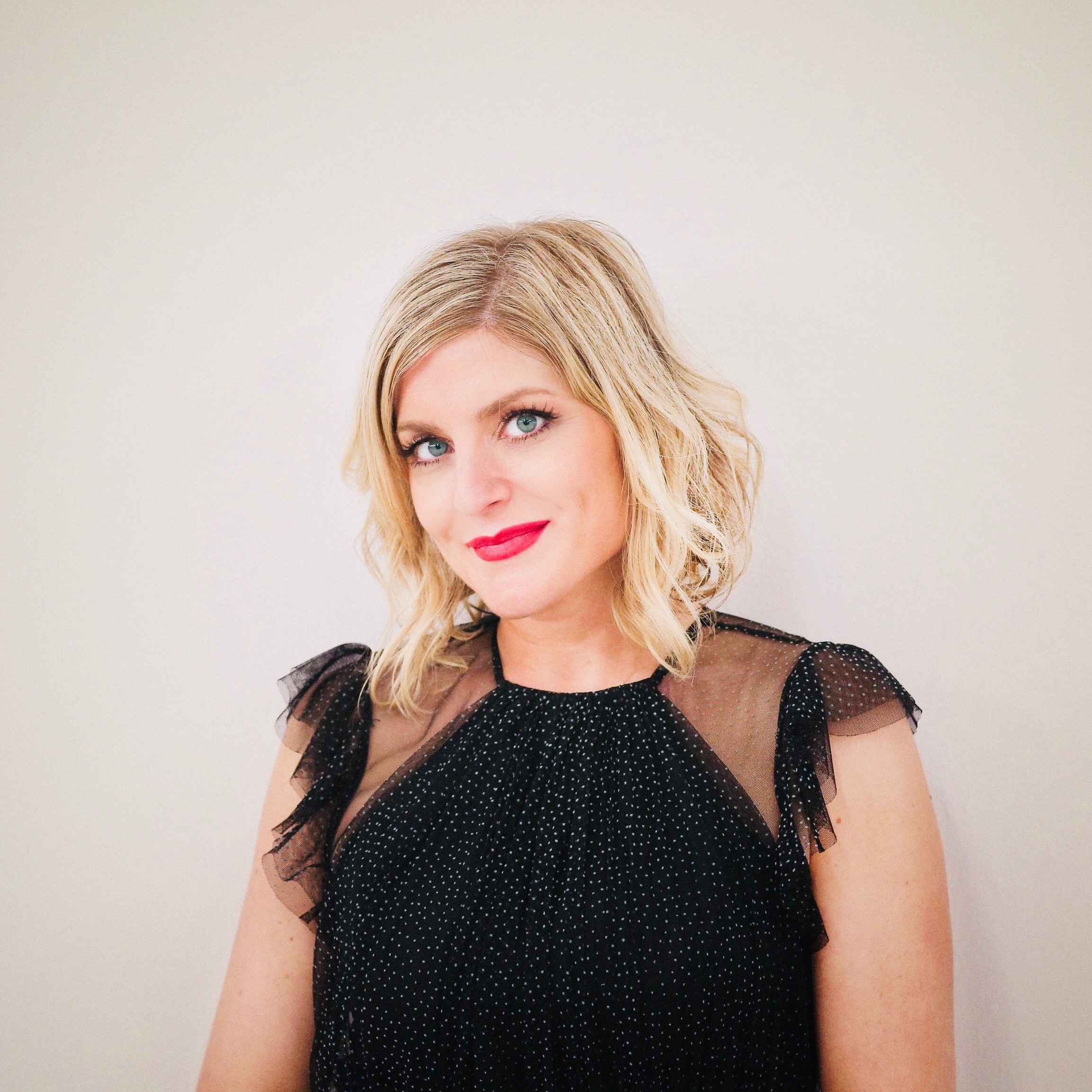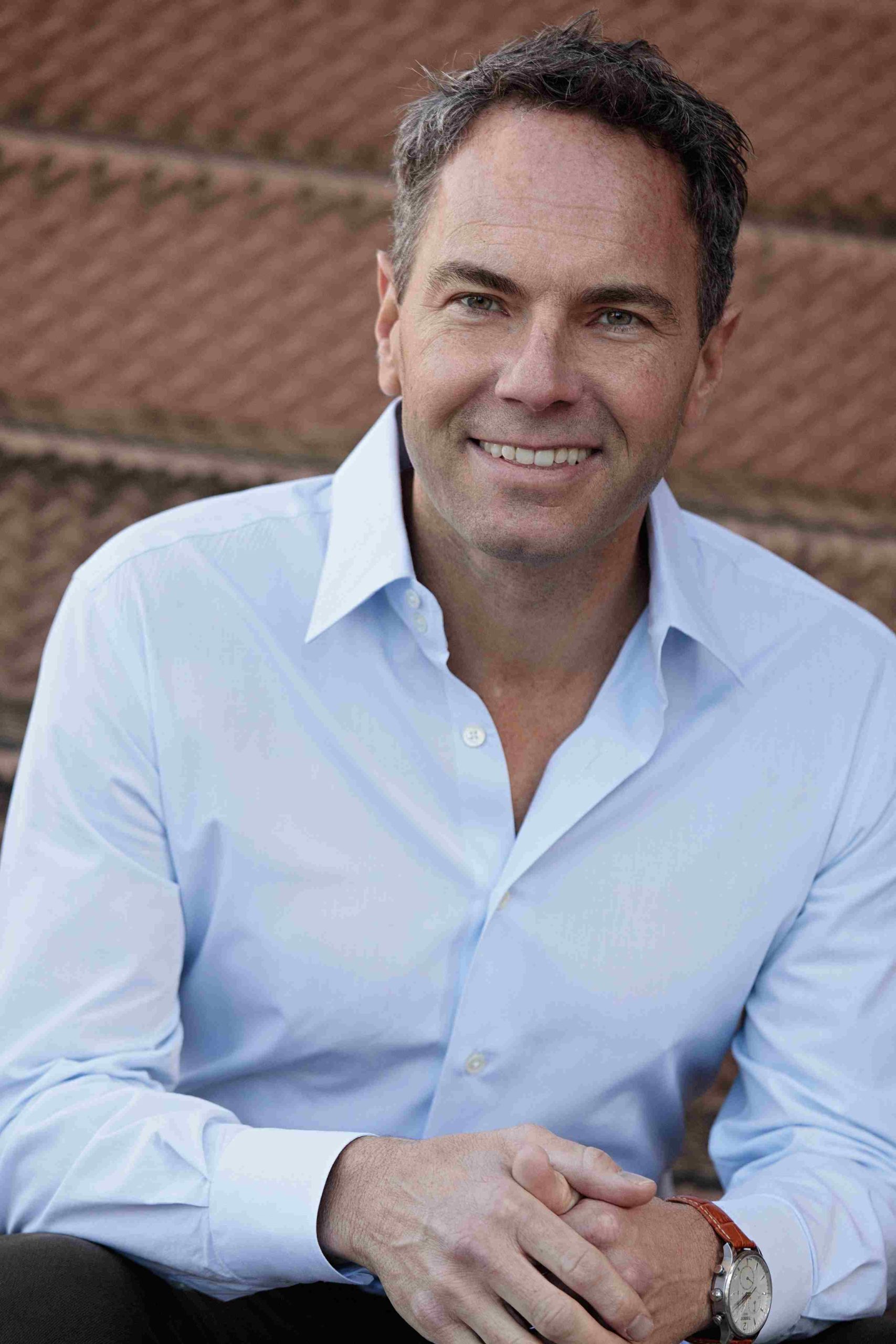Lara Schmoisman 0:00
Hello, and welcome back to Coffee N5. When I started my career as a producer, you guys know that I was a producer at some point in my life for a long time, actually. And I learned that my phonebook was everything. My teachers in school told me that your phonebook, your phone lists, your contact list was absolutely everything. So if you can snatch, you can get any numbers, if you can just make the best list in the world, you’re going to be successful. And you know what I learned, I learned that they were completely wrong. It didn’t matter. If you have the phone number, if the person didn’t know who you were, or you had the credibility, they will never answer you, or they will never do anything for you. So you had to create that authority, and you had to have a credibility, a phone number and email address. Now, none of that will ever help you. So you guys also know that I was named for Forbes next 1000. And there was this meeting for all these 1000 people that we were named together that was such an honor and unexpected. And I met this woman, a wonderful woman. And she was so interesting that I had to tell her, please come to my podcast. And here’s Dr. Stefanie Boyer. Welcome.
Stefanie Boyer 1:30
Thank you so much for having me. I’ve been looking forward to this all week. It’s so good to be here.
Lara Schmoisman 1:36
I was so impressed with you. And I mean, you also wrote a little black book of social media. And I was even more impressed about this. And you’re a professor and you teach sales, which is super complicated to teach, because it comes with a natural quality for people to learn how to sell themselves. There are some rules but at the same time, you need to make them your own. So I love to have you here. And we’re going to be able to do a deep dive in this conversation about, let’s first let’s talk about that book.
Stefanie Boyer 2:12
Absolutely. Yes. What would you like to know?
Lara Schmoisman 2:16
I would like to know everything. I mean, first of all, how do you feel about those phone numbers of those contacts? Because I mean, a lot of people are feeling that social media right now, which I totally disagree with, is a popularity contest. And isn’t that just to get more followers. So your take on all this, social media
Stefanie Boyer 2:38
is wonderful, because you can become a trusted advisor and really you don’t go and just buy it. It’s about engaged people that could potentially turn into customers of yours, they’re going to actually do some, it’s really not that impressive anymore. To just have a lot of followers, it matters, the quality of the followers that you have, and how much your brand will resonate with those followers.
Lara Schmoisman 3:06
Mostly. And let me tell you, from the point of view of brands, when I’m looking for an influencer, I don’t look at how many followers they have. I look at conversion rates. And I look at engagement rates.
Stefanie Boyer 3:18
Exactly. That’s so important. And sometimes it can be really, you know, you think it’s lucrative, you’re like, oh, my gosh, there’s so many followers. But how many of those followers are bots? How many of those followers are not actually seeing any of the posts, so you know, so it’s kind of a waste, just to have that much. And so if you look at how many followers they have, compared to how much engagement that rate is, that’s really where that sweet spot is.
Lara Schmoisman 3:45
Let’s talk for a minute about ratios. So let’s give people an idea what healthy ratio in social media of followers and engagement,
Stefanie Boyer 3:58
the more you can get, the better. Um, there’s different tools that you can use. I know on LinkedIn, Scott Ingram actually created a tool. It’s called the success analyzer. And what it looks at is the total number of followers and then the last 10 posts that you had, how many contacts and so then it creates a percentage that way. If you’re over 25%, then you’re doing pretty good. If you say that out of all your followers 25 are really engaged and actually taking time to comment, then I think you’re really on the right path.
Lara Schmoisman 4:32
Yeah, but also I see like, for example, a lot of people ask me about Instagram, and I tell them listen, if you have 14,000 followers, which is great because you have over 10,000 You can get swipe up and you can get everything you want but you have 20 likes, that’s no good.
Stefanie Boyer 4:49
Not at all. That doesn’t look good at all because it’s telling you a story, that your content is not good or something else is happening. Right, that is Is preventing anybody from seeing your messages or all your followers?
Lara Schmoisman 5:04
Exactly. To me, that’s a red flag that will tell me these followers are not the right followers for your brand. Exactly. That’s exactly right. And or you bought followers.
Stefanie Boyer 5:17
Exactly right. And more companies need to know that. But there’s, there’s this huge gap of knowledge. And for a lot of companies, social is just this thing that they don’t understand. It’s just that thing, maybe some people think, oh, it’s where you post your picture. So your family can see that, or that’s where debates happen. They don’t really understand the business side of that, so they really want to get into it, but they need a strategy to follow. And they need to find out who they are
Lara Schmoisman 5:45
to say that one of my favorite words in this world, which is strategy. People don’t understand how much work really gets into social media, if you want to do it, right. I always measure intentions. When we make a calendar I put in for each post that we make my intention here is to get comments. My intention here is to get likes, my intention here is to get followers, what is my intention, which each pose so then you cannot analyze if it worked? Or did it?
Stefanie Boyer 6:19
I think that’s a really good point. A lot of people even when they’re setting goals for themselves, you know, they say like, oh, you know, I want to be healthier? What does that really mean? In one month? How can you gauge if you’re healthy or not? If you didn’t really define what that meant? Does it mean losing weight? Does it mean faster running a mile? Does it mean fitting into your clothes better? Does it mean eating right? There’s so many things that that can really mean? It’s the same thing with social media, you have to have that intention? What did you want to get from that post? From that copy from that image? What did you want to get out of that? And you have to have a goal to start out in order to know if you’ve even been successful. So that way you can make an adjustment layer.
Lara Schmoisman 7:05
Absolutely. And also you can see what works and what doesn’t work with your audience. Exactly. And also a lot of people that let’s talk about the selling point of how do you sell in social media?
Stefanie Boyer 7:20
Well, you can still use the same sales process, the biggest thing that I’ve done, so for instance, for our company rainmakers that’s out there doing sales training, I reach out to companies and I reach out to faculty members who want to use a product on LinkedIn. So you’re able to send a direct message, to start the conversation to create that connection, and build some trust, and find out if there’s some interest on their end if they actually need something that you have to offer. So there’s the direct messaging part, that’s really important, but just building your thought leadership brand. Because the first thing people do when you reach out to them, look you up, they try to look up your background and look at what you’re posting about to see if you’re credible. And so all of those marketing efforts really pour into whether someone’s going to take you seriously or consider you for an opportunity or not.
Lara Schmoisman 8:18
Absolutely. So how do you initiate? Because this is, I think, a lot of struggle for people. How do you initiate that conversation in LinkedIn, because believe me, I get at least 20 people a day trying to sell me something
Stefanie Boyer 8:33
terrible. It really is. So I think the first thing you need to know about selling is that nobody cares about what you want. They care about what they want. So when you’re sending out messages about what you want, nobody cares. If you say I’d like to meet with you, I’d like to connect with you. I’m trying to grow my network. Let’s connect. I want this, I want to do that when you do that, then the person says, Okay, I mean, that’s great, I don’t even know you, you have to grab their attention. In the very beginning, it has to be a very short message when you’re reaching out. And the thing about LinkedIn is that you can send a connection request that’s blank. And you’re just wasting your time. So if you hit Connect, and that’s it, like if you’re on your phone, you hit Connect, it just sends a connection request, they have nothing to go on. So there’s a lot of people out there that I’ve talked to that say, oh, I want to connect and then if they connect back with me, then I’m going to start the conversation. That’s not a good idea. Instead, you want to send your connection request with a note. And the note should be made up of at least three elements, but they should be really short. So the first one is the attention getter. So how are you going to grab their attention? The second one
Lara Schmoisman 9:46
is going to give a little example like for example, let’s say that you want to approach me, you want to sell me your services. How would you do it?
Stefanie Boyer 9:55
So I might come in and I’d say Hi, Laura. I’m Stefanie Boyer. I run this sales program at Bryant University. And so then that’s going to probably grab your attention because you’re a faculty member before, right? And then I might say
Lara Schmoisman 10:09
gives you immediate authority.
Stefanie Boyer 10:11
Exactly, exactly. And then I might say something like, I’d love for you to come in and be a speaker in my classes. Right? And so now, I’ve told you what I’m looking for. And you know exactly what that is, it’s something that’s probably going to be interesting to you. I’m reached out to by people every day asking to come speak to my students. And then I might just say, you know, are you open to this, I don’t have to get in, I want you to come in on this day. And this time, and all of this, I just have to say something about what I’m interested in, and then are you open to this, and of course, you’re going to be open. I mean, maybe really big jerks are gonna be like, I’m not open to anything at all right, you’re open to at least a conversation about coming in or sparked your interest, but you’re probably going to at least connect with me. And then from there, now we have an open line of communication, maybe you got really busy and you couldn’t respond to me right, then, then I might follow up again, and say, hey, great job on that podcast here, I’d love for you to come in and talk about that in my class, I have an opening on these days, right. And so then I continue to push the conversation,
Lara Schmoisman 11:18
say something here that he has to be someone that you’re honestly interested in. Because, of course you don’t you’re no, you don’t want to use that line everywhere. And then because you’re not gonna bring anyone to talk to your students.
Stefanie Boyer 11:32
Exactly. And so every single message that very beginning that first part of it, if you look at Outreach IO, they have an interesting sequencing model that they use. And one of the recommendations is take at least 10 minutes for that first prospect, to write a high quality Letter of Intent to make sure that that person really is the right fit, that you’re writing a message that a computer couldn’t write, you’re writing a message that you have to be human to actually write that message. Sam Nelson actually came into my classes from outreach, and he talked about this, they actually have a program where they say, you can reach out about 30 times within a one month period before you just forget about that person. And because people get busy, and you know, you may not have had the right message to begin with. But it’s all about building that authenticity, that authentic, trusted advisor, relationship and that brand so that people can understand, you’re really there to help them because at the end of the day, they don’t care about what you want, they care about the things that they want.
Lara Schmoisman 12:41
Yes. And also, like, I’m gonna tell her an experience that I had very recently, I was one of these big people that are there on the internet, I’m not gonna give names. But in this selling, also, this is selling a product program. And I inquire because I’m interested to know what they offer and what they are pitching, I’m always looking at what’s trending, I’m always consuming these things, because this is what I do. And that’s how I learn also, to see what people are doing. I say, Oh, they’re doing this great, or this. I don’t think that works. But let’s see how it worked from them. So I gave her my email and my cell phone number. Immediately, I got an A call. I was super recycling that I got. And it came out actually with my area code. So I was afraid that it was from my kids’ school or something like that. So I picked that. And I say sorry, I cannot talk right now. But it doesn’t mean they were very harsh. And I can’t keep calling. I hung up. And then next thing I know, they send me a text message personalized with their video showing me that they’re at work, and that they’re real, and they’re ready to talk to me. I want to talk to my assistant, but I cannot do this right now. I gave her the num he’s a number. I know that they’re very well known. But I found that too much.
Stefanie Boyer 14:09
It is and you know, it goes back into thinking about what does that person want? What does that person need? You know, and if they’re just so pushy and aggressive. That’s why sales has such a bad reputation. Because when companies are out there, and they’re so pushy, and they’re so aggressive, they don’t let you talk. They just try to shove whatever the product is down your throat, then you’re like, oh, I don’t want to have any
Lara Schmoisman 14:37
I might be interested in listening to you. But I don’t have time right now. Send me an email and we’ll arrange a time.
Stefanie Boyer 14:45
Yeah, yeah. I mean, it’s just a classic example of them not listening. And in sales that’s critical. You have to be able to ask really good questions. And you have to be able to listen to what the person says in the response. You can’t do that, you can’t sell.
Lara Schmoisman 15:02
And there’s this about sales people who think that selling I’m not. I hate sales. But the truth is that we are selling ourselves all the time. That people don’t realize. But for example, we as an agency, we have opening positions. So in this time of the world, we have more opening positions that I would love. But it’s an issue. And I would have people doing video interviews from the web. I mean, that’s, that’s not how you sell yourself. You’re trying to sell yourself and to get paid for your work. That should not be your first introduction. Right. Right. Well, it’s, it’s like manners are super important in sales.
Stefanie Boyer 15:54
Yes. No, it absolutely is. And, you know, so we actually created a product, it’s free to all college students, and it helps them to sell themselves. So they learn how to sell, they learn the sales process, and they get to practice it with a bot. So it’s not so intimidating, like you said, it’s like, oh, I don’t know if that’s for me. And it’s hard to get people in sometimes, because they
Lara Schmoisman 16:24
That sounds amazing.
Stefanie Boyer 16:26
Yes. So if you know, any college students definitely, you know, send them our way they can go in this program and train for free, there’s two different things that they can do. There’s one, which is role playing. And so they’re learning how to sell a Dell computer to someone in a fire station. So basically, going through the whole process over and over again, a lot of my students did over 150 roleplays last semester, which imagine 150 Practice meetings, and then we have another product to help them to sell themselves. So if you’ve ever had that chance encounter where you know, even on our Forbes 1000 call, you had just a few moments to introduce yourself and say something interesting to get people to want to connect with you. So this is really a storytelling program that uses the STAR method and gets people to practice telling their story. So for college students, it’s completely free, and it’s rainmakers,
Lara Schmoisman 17:19
I would definitely send my son over.
Stefanie Boyer 17:22
Yes, yes, please do. Please do. And that’s it. I’ll send you the information, but it’s rainmakers, and it’s spelled RNM K Rs, so it doesn’t have any of the vowels.
Lara Schmoisman 17:33
Okay. Okay. In the chapter notes, as well, so,
Stefanie Boyer 17:38
right. And our whole goal is we want to really elevate the sales profession, because like you said, we sell all the time. I have three kids, and my youngest does not like to eat vegetables, and I constantly am trying to sell to him. And I’m you use it every day, whether you’re working or not, like staying at home, moms are going to have to sell just as much. You’re trying to make the experience more fun. I mean, that’s a perfect example of your kid doesn’t caring what you want. The kid wants what they want, and they want to maybe be entertained and have fun and play with their parents. And so you’re zooming the little food and their story
Lara Schmoisman 18:19
And it’s really important. That’s something I learned. I’m selling myself as a person, as a brand, or the CEO of the company. And I learned that what I attract people is my story. Mm hmm. I was criticized so many times. And I would love your honest input about this. But many times I start my pitches about introducing myself and getting people to bond with me. I was criticized that I should make everything about the client, or the prospective client, and I will and I believe if the client doesn’t feel comfortable with me first, they are never going to open up.
Stefanie Boyer 19:01
Well, you know, they have to trust you, and know you. And so yes, it’s important to ask them about them and to hear their story. I know there’s some research about the psychological truth. And once someone feels like you totally understand their story. Now they’re very receptive and trusting you because you really get them, you know them. But in the very beginning, you’ve got to tell your story. So they know what they’re getting into. It can’t just be all about them. 100% They’ve got to know who you are a little bit. Otherwise, they’re probably not going to want to open up to you. They don’t know you.
Lara Schmoisman 19:35
Absolutely. Absolutely. And let’s talk a little bit about networking. Because a lot of people think that networks are doing networking for sales.
Stefanie Boyer 19:46
Yeah, networking is so important. If you don’t network, you’re not going to meet new people and you’re not going to talk about what you’re working on. You’re not going to find new opportunities. I know with a pandemic, it’s been a lot harder for people because you can’t just go to a room filled with people, or trade shows so easily. And even when you do go, you have your mask on, and you just lose a little bit of that, you know, the facial expressions and all and all the things going out for drinks after, you know, having those conversations
Lara Schmoisman 20:14
I miss those days,
Stefanie Boyer 20:16
I know and you know, think about all the times you sit there with a napkin, and you come up with a brilliant idea. And you’re able to move forward on that just because you’re in a different environment, kind of like your students in the hallway. So, yeah, networking is so important. And you can still do that on LinkedIn. And, you know, even just taking, you know, 20 minutes a day and reaching out to 10 people on LinkedIn, that would be, you know, good to be in your network, or could be a potential client or somebody that you can help grow your network, so much
Lara Schmoisman 20:47
To say that if you have to look at the big picture and think that it’s not going to happen today, you’re not going to make the sale today. Your are your billing. Even when you go to a room of networking, I think it’s perfectly fine. Just to talk about your services. I’m not gonna beat you there. But I mean, here’s my car, let’s exchange information. I’m happy to be to or I’m happy to talk to you. But let’s know more about each other.
Stefanie Boyer 21:17
Sure, sure. And you know, and in those environments, you’re kind of, you’re constantly looking, who can I help? Yep. Who needs my help? And if you’re able to help somebody, you’re going to be able to make money. Yeah.
Lara Schmoisman 21:30
And something else, I noticed that people are really struggling to find those prospective clients, or they go to find them in the wrong spot.
Stefanie Boyer 21:41
Sure, sure. Or they’re not talking to the right person, maybe it’s the right company, but they don’t have the right person, and they don’t know how to find the right person.
Lara Schmoisman 21:49
So how do you do that?
Stefanie Boyer 21:52
Well, so you just look at you know, what is your buyer profile? Who is the person that typically says yes, and then what is amazing about LinkedIn, as you can just look that up. So for me, if I’m getting companies to participate in our rainmakers program, I know that the vice president of sales, or the chief revenue officer has a big problem, right now, it’s very hard to find qualified salespeople, it’s hard to find
Lara Schmoisman 22:20
my God, tell me about it.
Stefanie Boyer 22:23
If I find that person, and if they say that they’re hiring or anything, I can just easily look on LinkedIn and just search for a vice president of sales. And I can say maybe I want to work in the technology sector, I can specify who I want to find. And it’ll create a list immediately for me, and I can start working on that list right away and reaching out to people with that message, or you have any attention getter, right, you’re gonna show them something that they want. And then action.
Lara Schmoisman 22:56
an example. For example, what would you offer to them? We’ll go straight and offer a consultation, or would you offer a freebie what would you do?
Stefanie Boyer 23:04
I would just see if they’re interested. I might say something like, you know, Hi, Stephanie Boyer runs the sales, or I just say hi, run the sales program, brain University, right? So there’s credibility, they see sales, they see the university, so they know I’m not just someone trying to spam them. I might say something like, we have a sales competition. And with, you know, 3000 students each semester in college, we love to get your company involved. And then I might say, Are you open, and then send that connection, and then they’ll write back and they’ll probably say something like, well, I need more information. Yes, we need to hire University sales talent now, yesterday, and then we’ll hop on a 15 minute call, we’ll talk about what we’re doing and what some of their challenges are finding talent. And if they’re looking for students that are coming out of college that have sales training, they’re gonna want to get involved, because it’s so easy. We’re, we’re training, we’re finding more, we’re training them. And all they have to do is show up at a really good company culture, and then you know, the students are gonna want to work there, and they’re going to be happy.
Lara Schmoisman 24:11
That’s amazing. That’s incredible what you are doing for the students because I know how important is these days to give opportunities to the new generations and for people who are educated and informed but also give the leaders in the company let’s take security that these people this new world work for it have the tools to be in the in the in the market.
Stefanie Boyer 24:37
It is and you know, it’s so rewarding because one of the things that I always see is the students that are females that come into my classes, they come in and they’re like, I’m just gonna take the class because I know I need selling skills, but I definitely don’t want to go into sales, because they think they’re not going to be good at it. So their confidence level is down here. The guys come in and they’re up here and they’re like, I know I’m amazing. I can sell anything like they are overcoming then, and then the women are not. But we have these competitions, and we have these different programs. And it actually turns out that the women end up winning all of the competitions. It turns out, women are really, really, really good at sales. They just need to learn a little bit of the process, and they need someone to tell them they’re good at it. Otherwise, they don’t believe it. They think that they’re not going to be good at it. Because as women, we’re always so much harder on ourselves than anybody is.
Lara Schmoisman 25:26
We are. And that’s the truth. Before we go, Stephanie, I have one more question for you. Yes. And because I truly believe it, that we need to learn from our mistakes. And many times from our mistakes, we learn lessons that we’ll never learn from success. And that makes us stronger. So what is that story that you made a mistake, but if you learn so much that you’re happy that happened to you?
Stefanie Boyer 25:57
Oh, I mean, there are so many things that happen throughout my life where things just didn’t go my way. And I was devastated. I would say the biggest challenge I had is I had a career ending back injury. When I was an athlete in college, I was devastated. I was in pain, and I just didn’t really handle it very well. I was constantly in the doctor’s office, and I really had this idea of, you know, my life was gonna go on a certain path. And that was it, I had tunnel vision. And so I, you know, went down that path, and then things didn’t work out. It left me heartbroken and devastated. But if I would have had multiple options and multiple plans, I think that I would have been more resilient at that time. And I didn’t really have a mentor to talk about it. So I was kind of isolated, and had tunnel vision and things didn’t go the way I wanted. So now I’ve learned, definitely have a mentor, definitely have people to bounce ideas off of and have different plans. Don’t just expect that everything’s gonna go exactly how it’s supposed to. And really, it was all so wonderful that it happened that way. Because my goal was to be a javelin coach in college. That’s, that’s what I thought, and there’s nothing wrong with that. But I thought, you know, I was gonna train as a javelin thrower, I wanted to go to the Olympic trials, I wanted to go down that path. That’s all there was for me. And then getting that injury, I ended up getting my MBA, and then I ended up getting my PhD. And now I have this amazing life. I’ve got three kids, I’m married, like, it’s just, it’s wonderful. And I wish I would have known then that my life was still going to turn out just fine. Better than I ever expected. Do not let it hit me so hard. Sometimes
Lara Schmoisman 27:45
you just need to keep your eyes open. And my life changed so tough so many times. But thanks to all those changes, and all the things that I did in my life, I am where I am today, if I wouldn’t have learned all those skills, I wouldn’t be able to run this company to have it.
Stefanie Boyer 28:05
Exactly. And those hardships are the things that make you more resilient. Later it helps you to become a better coach. Better mentor, a better leader. So you know, all these things that happen. You know, they’re all adding to this canvas of life that we’re living.
Lara Schmoisman 28:21
Yeah. Thank you so much for being here. And coffee number five. I love love love talking to you. I think we learn so much about sales. And thank you again.
Stefanie Boyer 28:34
Thank you so much, Laura, you’re an awesome host. I love this. And if there’s something I can do to help you promote any of that, please, I’m here for you. I love what you’re doing. Keep it up and thank you for having me.
Lara Schmoisman 28:47
Thank you, um, to you guys, everyone. I will see you next week on coffee number five








